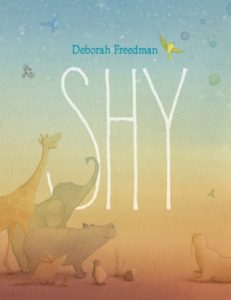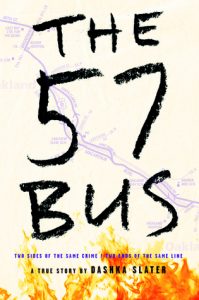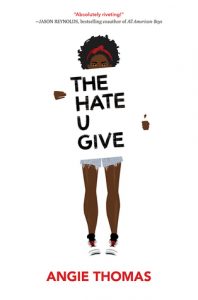In this season of giving, it can be challenging to get students to think beyond themselves and their list of wishes.
That’s why an Academic Service Learning project is one of my favorite things to do. This project, part of my district’s initiative to connect learning and community service, allows me to combine persuasive writing with student choice, in a way that produces lots of great ideas for a class project–and guarantees family involvement from the start.
Our Service Learning Begins with Reading
I start by reading students several books over the course of a week, asking them what they notice, and charting their thinking. At the end of the week, we start to look for common themes that emerge. This helps to launch the conversation about our project. Books I have used include:
- Wangari’s Trees of Peace, by Jeanette Winter – picture book
- The Carpenter’s Gift, by David Rubel and Jim LaMarche – picture book
- The True Gift, by Patricia MacLachlan and Brian Floca – short chapter book
Some other books that may be helpful are:
- Boxes for Katje, by Candace Fleming and Stacey Dressen-McQueen
- 14 Cows for America, by Carmen Agra Deedy and Thomas Gonzalez
- One Hen, by Katie Smith Milway and Eugenie Fernandes
Students Propose Actual Service Projects, via Persuasive Essays
After we have read the books and discussed themes, I reveal the assignment to the students: they must come up with an idea for our class ASL project and write a persuasive essay about why we should do their project.
I send home a letter to families asking them to have a conversation with their child, and to help them come up with some ideas for our project. Students bring back their ideas and then they choose one to use as the basis for their persuasive essay.
This makes the writing so much more purposeful. Students know that they have to convince not only me, but also their classmates, in order to do their project.
Then We Vote
Once all essays have been submitted, I begin the task of choosing five to six for the students to vote on. (Side note: if you haven’t used Google Classroom before, you should try it for writing assignments! Life changing!) I try to find a nice variety of ideas as well as essays that are well written.
After this is done, I read the finalists out loud to the class. I always stress that they are not to tell who wrote what; this needs to be about the project and the writing, not a popularity contest. Once the votes are in, we begin the process of planning and implementing our ASL project.
And Finally, We Take Action
This project has been a great way for me to get kids engaged, help them find passion, and get them to think outside of themselves. We have raised money for local animal shelters, sent money to WWF for elephants, made blankets and games for children in local hospitals, and purchased books for children in a nearby school. The reward of seeing my students feel so successful goes far beyond what I could have imagined. I will never teach persuasive writing any other way.
 Beth Rogers (@bethann1468) has taught in the elementary setting for the past 11 years. During this time, she earned her Master’s in Educational Technology from Michigan State University. This year, she is in a new position: Instructional Technologist K-12. This gives her the unique opportunity to work with teachers and students, district wide, to incorporate technology into their teaching and learning, in ways that engage, enhance, and extend the learning. She has already already begun to work with multiple classrooms to engage students in blogging, and to help teachers understand the power of this platform. At home, she lives with her husband, sons, and an anxiety-ridden German Shepherd who requires inordinate amounts of time and attention.
Beth Rogers (@bethann1468) has taught in the elementary setting for the past 11 years. During this time, she earned her Master’s in Educational Technology from Michigan State University. This year, she is in a new position: Instructional Technologist K-12. This gives her the unique opportunity to work with teachers and students, district wide, to incorporate technology into their teaching and learning, in ways that engage, enhance, and extend the learning. She has already already begun to work with multiple classrooms to engage students in blogging, and to help teachers understand the power of this platform. At home, she lives with her husband, sons, and an anxiety-ridden German Shepherd who requires inordinate amounts of time and attention.


 Technology has certainly exploded between the time I started preparing to become a teacher and now, but lately I’ve been thinking about Google–and the ways that education can, and should, mirror the company’s ubiquitous technology.
Technology has certainly exploded between the time I started preparing to become a teacher and now, but lately I’ve been thinking about Google–and the ways that education can, and should, mirror the company’s ubiquitous technology. Megan Kortlandt
Megan Kortlandt With the holidays coming, teaching curriculum in any cohesive fashion can be challenging–at best.
With the holidays coming, teaching curriculum in any cohesive fashion can be challenging–at best.  I’m not even finished reading
I’m not even finished reading  The Hate U Give
The Hate U Give Regulars on this blog are probably betting all the money in their bank accounts that I’m going to suggest a graphic novel (just kidding–what teacher has money saved up in a bank account?!). I’m going to branch out in a new direction, though, and recommend a tough but beautiful read by Jesmyn Ward called
Regulars on this blog are probably betting all the money in their bank accounts that I’m going to suggest a graphic novel (just kidding–what teacher has money saved up in a bank account?!). I’m going to branch out in a new direction, though, and recommend a tough but beautiful read by Jesmyn Ward called 
 Tina Luchow (
Tina Luchow (

 The Smartest Kids in the World: And How They Got that Way
The Smartest Kids in the World: And How They Got that Way Make It Stick: The Science of Successful Learning
Make It Stick: The Science of Successful Learning
 Bethany Bratney
Bethany Bratney
 Hattie Maguire (
Hattie Maguire (